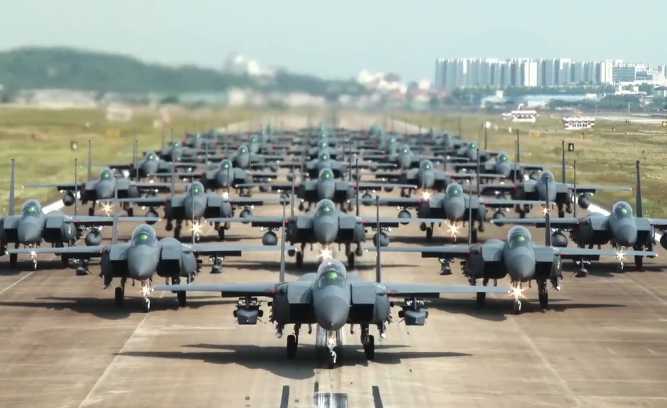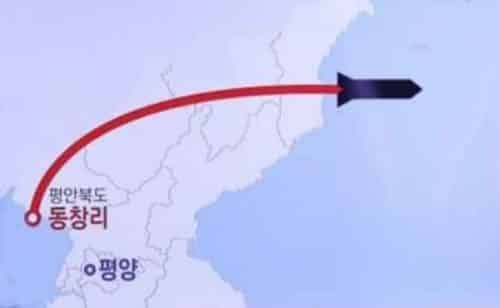WASHINGTON, March 27, 2012 – The United States is well protected against the current threat from limited intercontinental ballistic missile attacks, but the threat is growing, underscoring the need for a robust and flexible defense system, a senior Pentagon official said here yesterday.
Development and deployment of the Ground-based Midcourse Defense System protects the United States against the current threats posed by nations such as North Korea and Iran, Madelyn R. Creedon, assistant secretary of defense for global strategic affairs, said at the 10th Annual U.S. Missile Defense Conference.
With 30 ground-based interceptors in place, the United States is well protected against the current threat, she said at the conference, sponsored by the American Institute of Aeronautics and Astronautics.
“Maintaining this advantageous position is essential,” she added. “As the threat matures — and it will — we will continued to improve the GMD system, including enhanced performance by the [interceptors] and the deployment of new sensors.”
Creedon outlined the Defense Department’s ballistic missile defense plans and priorities as part of the military strategic guidance President Barack Obama issued in January. She detailed U.S. progress in sustaining a strong homeland defense, strengthening regional missile defense, and fostering increased international cooperation.
Obama’s fiscal 2013 budget request to Congress includes $9.7 billion — part of $47.4 billion over five years — for missile defense. Though the request is down slightly from the current year, Creedon said, it adequately supports the U.S. commitment to both homeland security and regional defense.
The improved ground-based system requires a satellite tracking system, as well as the Standard Missile 3 Block IIA and IIB interceptors. “These efforts will help to ensure that the United States possesses a superior capability to counter projected threats for the foreseeable future,” Creedon said.
The United States also is developing a “hedge strategy,” Creedon added, to address possible delays in the development of the system or emerging threats. “The United States must be well hedged against the rapid emergence of a threat that undermines the advantage we have today,” she said.
Creedon said development of the four-phase system includes:
— Development of the two-stage ground-based interceptor and completion of 14 silos at Fort Greely, Alaska;
— Inclusion of funding in the fiscal 2013 budget request to improve the ground-based system with early warning radars, advanced sensors, and improved command and control software, all designed to make the system increasingly more efficient;
— Deployment of the SM-3 IIB in Europe early in the next decade, providing early interception capabilities from a possible Iranian attack and other emerging threats; and
— The purchase of five more ground-based interceptors to improve rapid response and allow for testing and spares, as well as “to keep the GBI production line warm.”
After a decade of progress in fielding capabilities against short- and medium-range ballistic missiles, “the United States is now capable of significantly strengthening the protection of its forces abroad and assisting its allies and partners in providing for their own defense,” Creedon said.
The short and medium ballistic missile threat is rapidly expanding in areas where the U.S. military is deployed, and Defense Department officials are reviewing the best ways to address the threat with systems that are mobile, flexible and region-specific, Creedon said. Such regional architectures will augment homeland defense, she added.
The commitment to missile defense is growing among NATO nations, Creedon said, and the United States deployed the first phase of its European-based system with the guided missile cruiser USS Monterey, carrying SM-3 interceptors, in the Mediterranean Sea.
In August, Turkish officials announced they would host a forward-based radar system, and it was deployed in December, Creedon said. And the U.S. Air Operations Center’s command and control capabilities at Ramstein Air Base, Germany, now are operational, she said.
In Phase 2, a land-based SM-3 site will be developed in Romania, with Block II interceptors deployed on land and sea, and is expected to be operational in 2015, Creedon said. Spain has agreed to host four U.S. Aegis destroyers in Rota, with the first two ships scheduled to arrive in 2014, she said.
In Phase 3, a second land-based SM-3 site will be deployed to Poland, with SM-3 Block IIA interceptors deployed on land and sea, extending coverage to all NATO European countries.
In Phase 4, the SM-3 IIB will be deployed around 2020, which Creedon called “an important enhancement.”
“Iran continues to develop ballistic missiles that are capable of threatening all of NATO [in] Europe,” she said. “The capability will eventually enhance the protection of the United States by providing an early shot against an Iranian long-range ICBM headed to the U.S. homeland.”
The administration’s February 2010 missile defense review outlined these priorities:
— Defending the homeland against the threat of a limited ballistic missile attack;
— Defending against regional missile threats to U.S. forces while protecting allies and partners and enabling them to protect themselves;
— Testing new technologies under operationally realistic conditions before deploying them;
— Keeping new capabilities fiscally sustainable over the long term;
— Ensuring capabilities are flexible enough to adapt as threats change; and
— Seeking to lead expanded international efforts for missile defense.
Source: Department of Defense







